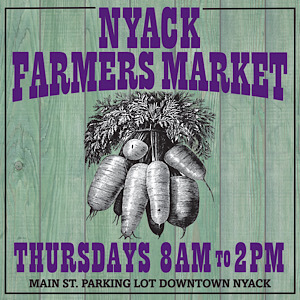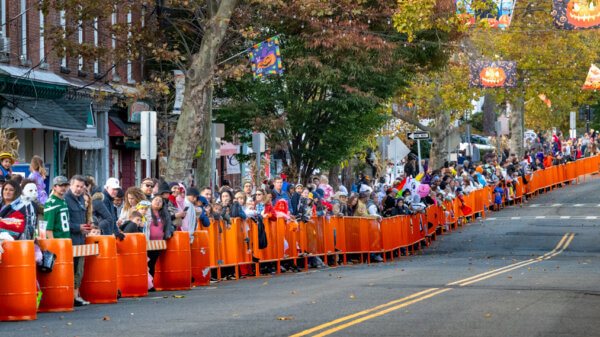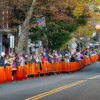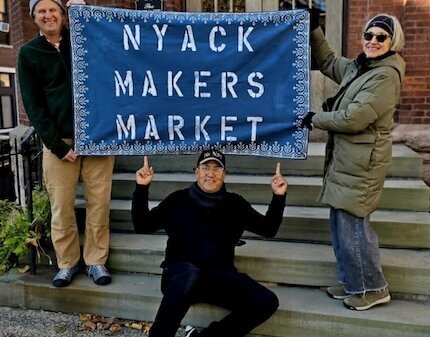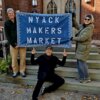“BURGLARS HAVE BEEN HERE!” — Postmaster Doersch’s cry broke Nyack’s quiet dawn.



Newspaper Headlines on April 23, 1895 from Nyack’s two evening daily’s.
“Burglars have been here!” shouted Postmaster Philip Doersch to his assistant when he opened the door to his private office at 5:30 a.m. on April 23, 1895. A back window stood ajar. The safe was open and empty, a small hole drilled near the combination to break the lock. Scattered across the floor lay burglary tools—and two boxes of pennies, still wrapped in rolls of twenty-five, apparently left behind because they were too heavy to carry. The Nyack Post Office had been hit by the largest postal robbery in Rockland County’s history.
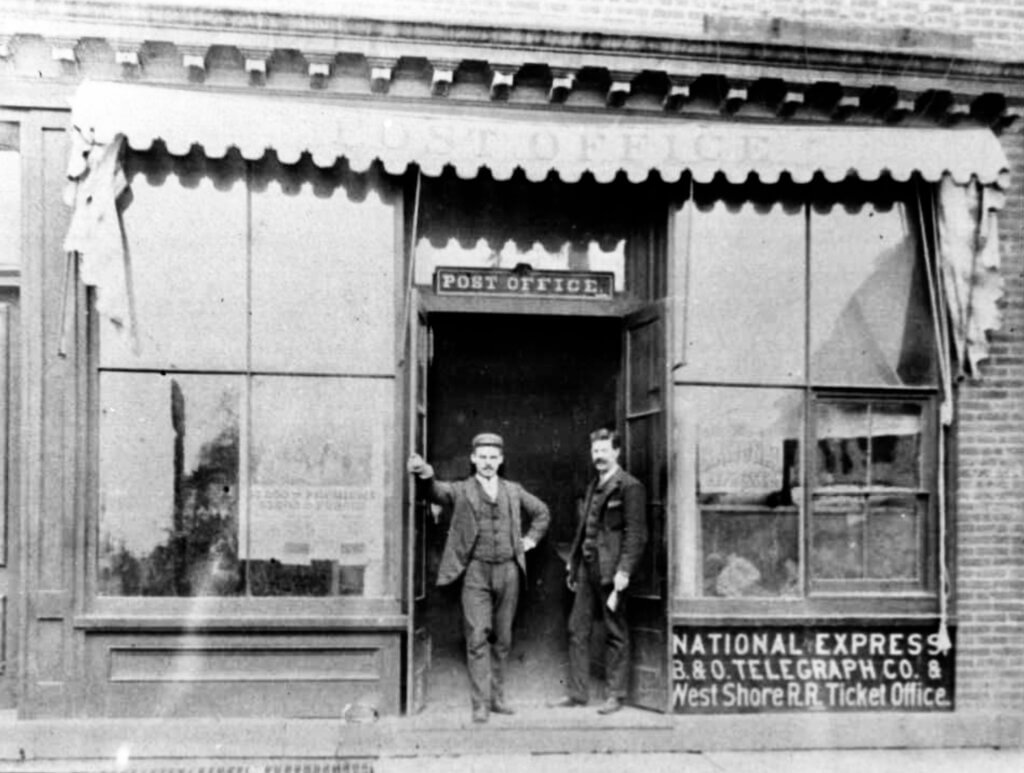
A Village on Edge
The 1895 post office robbery offers a vivid glimpse of life in Nyack at the end of the 19th century, when nearly everyone knew everyone else, money was tight for most, and suspicion often fell on outsiders. Much of America still had a “wild west” character—indeed, that same year in faraway El Paso, notorious outlaw John Wesley Hardin was gunned down by an off-duty policeman. Compared to that chaos, Nyack seemed tranquil, but to seasoned thieves, its quiet post office must have looked like an easy mark.
The Doersch Family
The Doersch family exemplified Nyack’s 19th-century immigrant work ethic. They came from Germany in 1857, part of the wave that helped build Nyack’s shoe industry. Patriarch Henry Doersch Sr. made and sold shoes in a Burd Street shop that also served as the family’s home. He and his wife raised five children—Conrad, Henry Jr., Charles, Philip, and Katie.
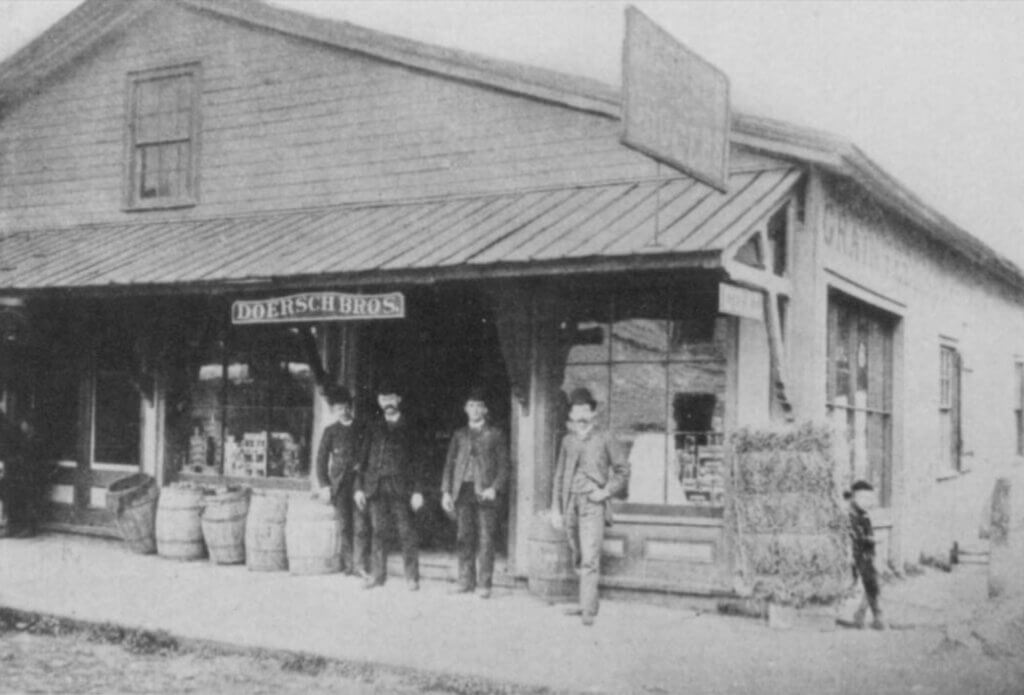
Henry Jr. and Charles opened Doersch Brothers Grocery and Feed Store in the old Wigwam building at Broadway and Church Street. After Charles died in 1883 at just 25, Henry continued the business alone. Meanwhile, Conrad started one of Nyack’s first large-scale shoe factories in 1878, operating on the second floor of the Morrow factory near the train station at Railroad Avenue (now Depot Place) and Cedar Hill Avenue. By 1890, he employed 34 men and 16 women—one of the village’s largest manufacturers.


A view of the Doersch Building at the corner of Remsen Street and South Broadway (left) and a photograph of the Nyack Brass Band led by Philip Doersch at a company event. Courtesy of the Nyack Library.
Postmaster Philip Doersch
Philip differed from his brothers. Equally civic-minded, he built his reputation early as a talented cornet player, leader of the Nyack Brass Band, and active member of the Nyack Athletic Club. A loyal Democrat, President Grover Cleveland appointed him postmaster in 1892 during his second term. Doersch championed direct mail delivery for Nyack, steering the effort that won federal authorization for the program—though his successor, George Helmle, ultimately put it into effect. Philip differed from his brothers.
“Like many Nyackers, Doersch wore many hats: musician, shopkeeper, postmaster, and small-town entrepreneur.”
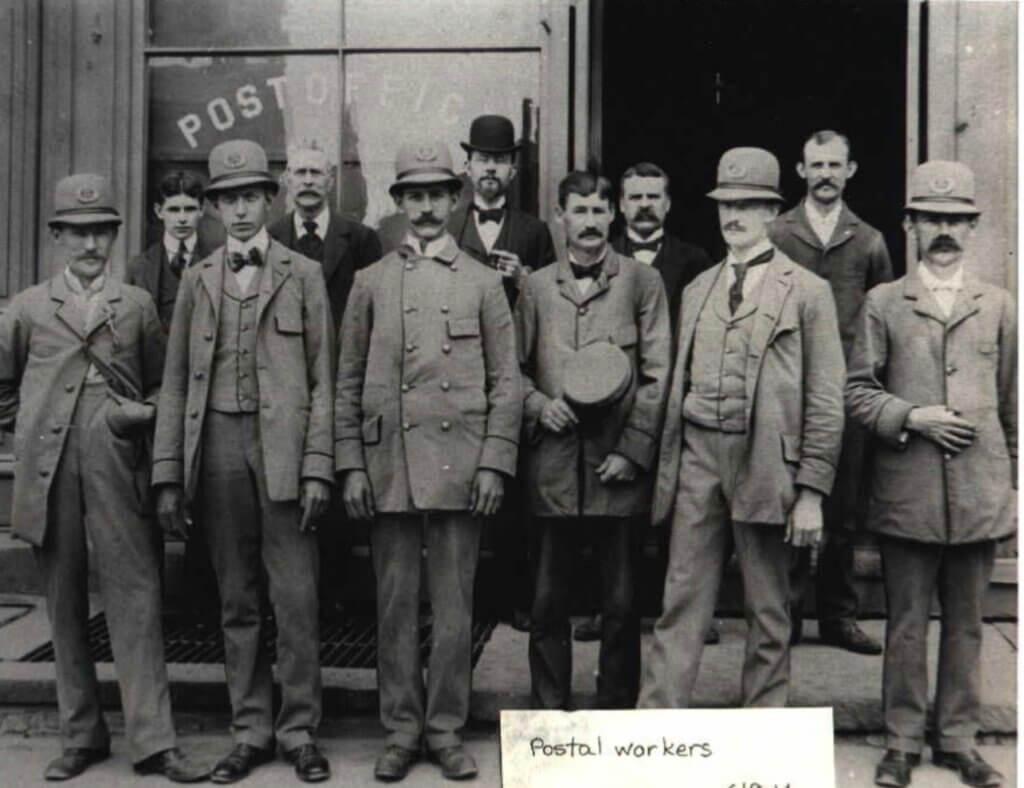
Like many local officials, Philip held multiple jobs. He worked in shoe manufacturing and operated small retail stores—one in the Onderdonk Block on Main Street and another in the Voorhis Building on Broadway, which he took over from his sister Katie. His business luck varied. In 1891, a runaway horse barreled down Main Street, turned onto Broadway, and crashed through his shop’s glass display case. Later, when a Republican administration replaced him as postmaster, he managed the Opera House near the train station, but the venture failed. Restless, he traveled for various business deals in the South, eventually patenting a bottle-closure device in 1907. Doersch died in Nyack in 1912 at age 52.
The Post Office Block
In 1895, the Nyack Post Office occupied one of several adjoining brick storefronts known as the Post Office Block on the west side of South Broadway between Church Street and Depew Avenue. To the north stood the old Doersch Brothers Grocery; to the south, the Christie residence, the town pump, and the Presbyterian Church—today’s Nyack Center.
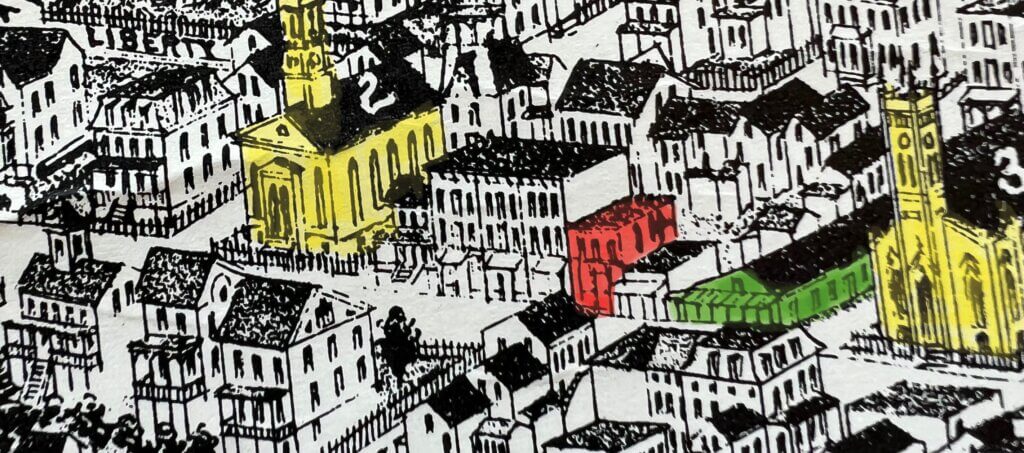
The post office drew its heavy shades at night. The building’s rear windows faced the Van Houten Livery and Stable, a convenient place for thieves to come and go unseen. The post office stayed there until 1913, when it moved across Broadway into the new Doersch Building at Remsen Street. Crews demolished the original block in 1959 during urban renewal, and Tallman Towers now stands on the site.
Did you know? The “Post Office Block” was torn down in 1959 during urban renewal. Tallman Towers stands there today.
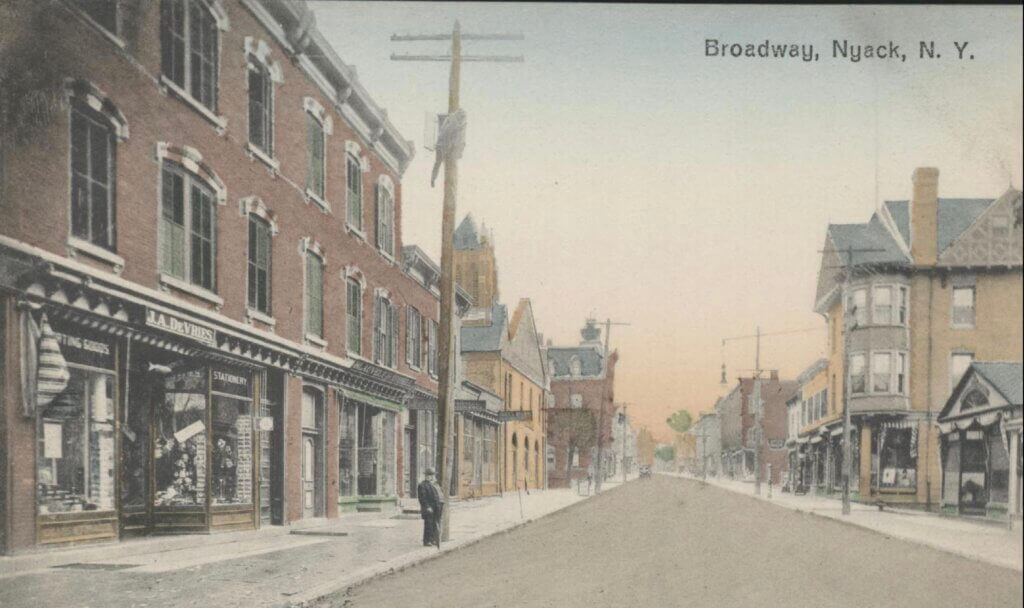
What Was Stolen?
Doersch reported the loss of $1,039.25 in stamps, most from the 1892 Columbian Exposition commemorative series honoring Columbus. With postage at just two cents per ounce, this was a massive theft. Thieves also took $261 in money-order funds, another $150 in cash, and nine registered letters containing negotiable bonds of unknown value. Even the assistant postmaster lost his wallet and bank book. The total haul, about $1,500, equals roughly $52,000 in today’s dollars.
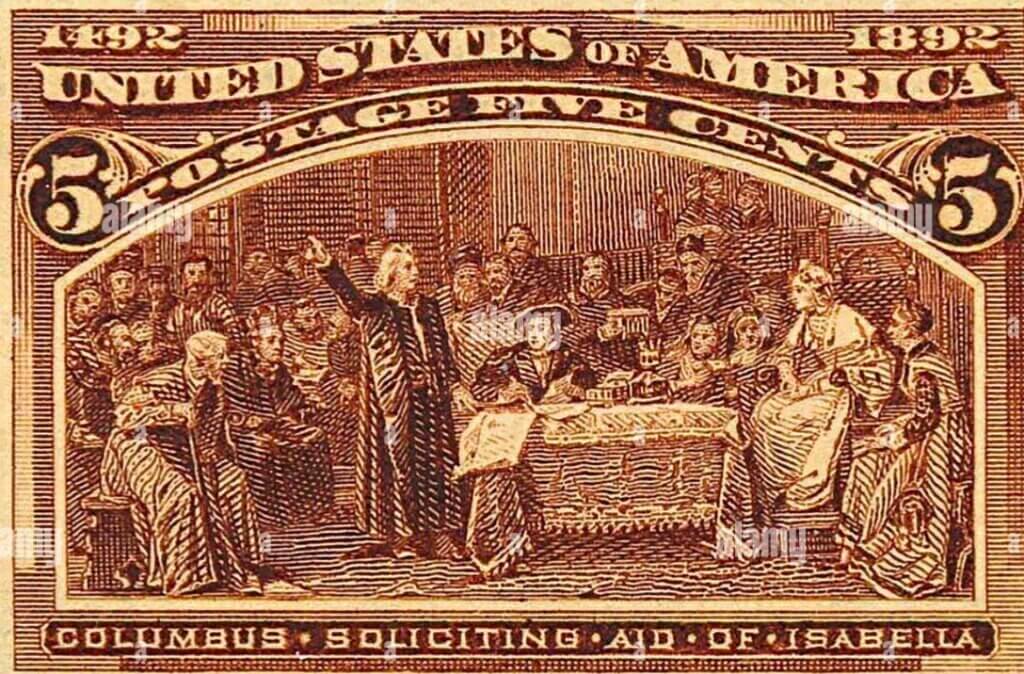
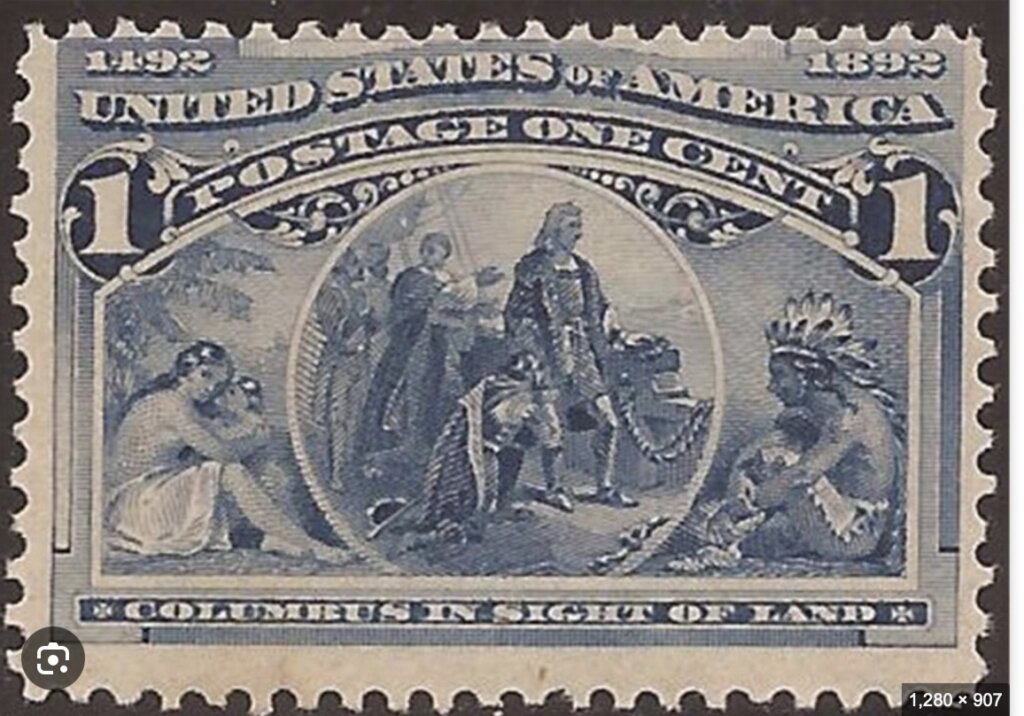
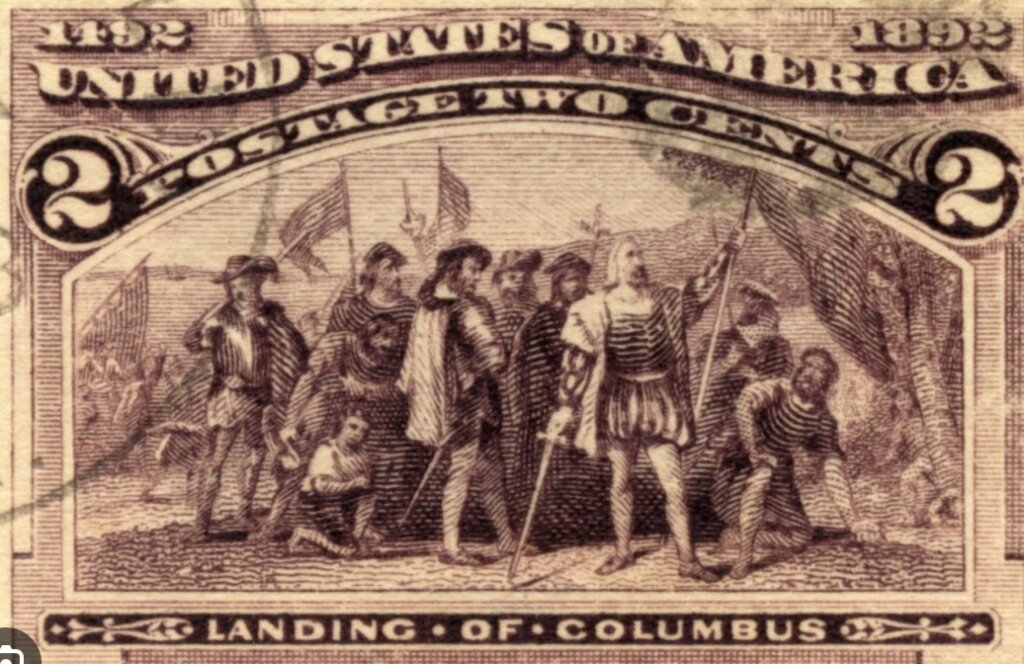
Samples from the 1892 Columbian Exposition stamp series.
Did you know? In 1895, postage cost just two cents per ounce—so $1,000 worth of stamps was a small fortune.
Perhaps the most dangerous item stolen was a numbered key that opened Nyack’s only street letter box at Mansfield Avenue and South Broadway. Incredibly, that key could open any letter box in the United States postal system.
“Among the stolen items was a numbered key that could open any letter box in the United States.”
Doersch immediately telegraphed federal authorities. Two inspectors from New York City arrived the next day, and the U.S. Postal Inspector’s Office posted a $200 reward for information. To his relief, Doersch learned that he would not be personally liable for the missing funds.


A photo of the gunfighter and bank robber, John Wesley Harding, and a wanted poster issued by the USPS.
The Crime Reconstructed
When a small-town robbery occurs, police often suspect local culprits—but these burglars were professionals. They had cased the scene, planned a getaway, brought proper tools, cracked the safe cleanly, left behind what they didn’t need, and vanished—all before dawn, in an age without cars.
Witnesses later recalled odd activity that night. W. Crosby saw two suspicious men—one bearded, one with a mustache—lingering near the Nyack Rowing Association boathouse at the foot of Spear Street, eyeing boats in Haines’ boatyard.

Richard Harvey, working late in his law office, dropped letters off at 1 a.m. and heard noises out back—“like someone moving trash barrels”—but thought nothing of it. Moments later, Frank Colsey, fresh off the midnight train, heard similar sounds as he walked by, assuming they came from the nearby lumber yard.
Inside, the thieves drilled through the safe’s lock mechanism and ransacked the drawers. They left behind four small drills, a bottle of oil, three larger drills, and a sledgehammer stolen from Winant’s blacksmith shop in South Nyack. The wrapped pennies proved too heavy to bother with.
Discoveries the Next Day
The next morning, Dr. L.B. Couch found a small metal drawer front from the safe attached to a telegraph pole near Brookside Avenue—a baffling clue with no explanation.
Investigators discovered that the thieves had stolen a boat belonging to Mr. Shakespeare from the Haines yard. It turned up the next day in Irvington, across the Hudson—oars intact. From there, the trail went cold.
An Anti-Climactic Capture
Six months later, police in Dennison, Iowa, captured a notorious safe-cracker named Jake Ross after his partner betrayed him while turning state’s evidence in another case. Known for robbing post offices across the Midwest, Ross drew immediate suspicion as the likely culprit behind the Nyack heist.

The Rockland County Journal suggested that the post office might be safer if it stayed open all night, with a well-lit lockbox area to discourage burglars. Assistant Postmaster L.O. Gregory later recalled, “It was a feeling I had never had before and never had since—to come into a place ransacked as that office was.” It remained, as the Journal put it, the “heaviest” robbery in Nyack’s history.
“Like much of human history, this story ends not with certainty—but with speculation.”
Whether Ross ever faced trial in Rockland is unclear. He may have faced conviction elsewhere, or he may have slipped through the cracks of the 19th-century justice system. History has erased his fate, leaving only the mystery—and perhaps a novelist—to finish the tale of the Great Nyack Post Office Robbery of 1895.
Mike Hays lived in the Nyacks for 38-years. He worked for McGraw-Hill Education in New York City for many years. Hays serves as President of the Historical Society of the Nyacks, Vice-President of the Edward Hopper House Museum & Study Center, and Upper Nyack Historian. Married to Bernie Richey, he enjoys cycling and winters in Florida. You can follow him on Instagram as UpperNyackMike.
Editor’s note: This article is sponsored by Sun River Health and Ellis Sotheby’s International Realty. Sun River Health is a network of 43 Federally Qualified Health Centers (FQHCs) providing primary, dental, pediatric, OB-GYN, and behavioral health care to over 245,000 patients annually. Ellis Sotheby’s International Realty is the lower Hudson Valley’s Leader in Luxury. Located in the charming Hudson River village of Nyack, approximately 22 miles from New York City. Our agents are passionate about listing and selling extraordinary properties in the Lower Hudson Valley, including Rockland and Orange Counties, New York.


